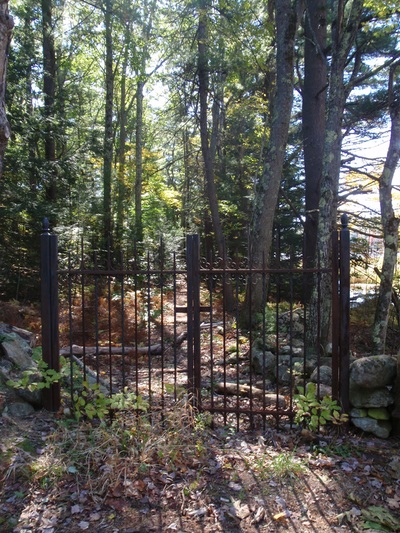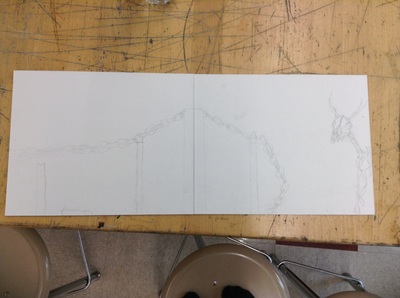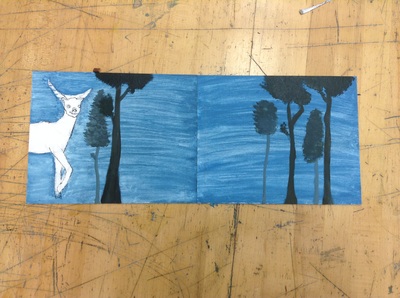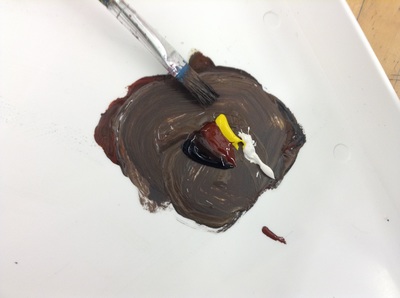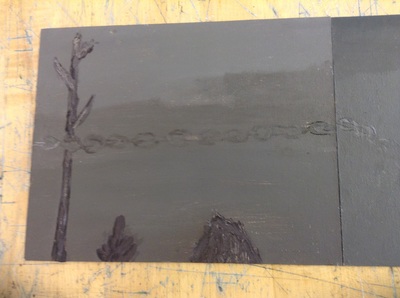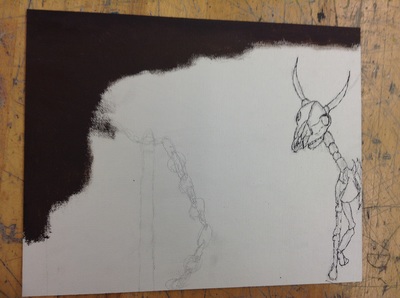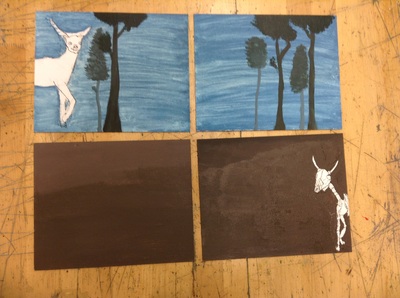Hell and Back
For my second project, I focused on the mysterious legends told around our world. First, I studied what an urban legend was and where it comes from.
History:For History, I researched two famous African Urban Legends that I found to be very interesting.
Van Hunks and the Devil: Devil's Peak was originally known as (Dutch) "Wind-berg" or (English) "Charles Mountain". The English term Devil's Peak is a 19th-century translation from the Dutch "Duiwels Kop", and comes from the legend of a Dutch man called Jan van Hunks. Van Hunks was a retired Dutch pirate who moved to South Africa with his wife. Also, to be known as a prodigious pipe smoker who lived at the foot of the mountain circa 1700s. When he smoked his pipe, his wife would tell him to do it outside. One day, while smoking on the slopes of the peak, he met a mysterious stranger. They each bragged of how much they smoked and so they fell into a pipe-smoking contest. After a heated competition, and a thunder clap, the stranger turned out to be the Devil and Van Hunks eventually won the contest. But not before the smoke that they had made had covered the mountain, forming the table cloth cloud. The story was captured by the 19th century poet Dante Gabriel Rossetti in his poem Jan van Hunks (or "The Dutchman's Wager"). However, since Rosetti's poem was only published in 1909, it's unlikely that this was the true source of the name, rather an urban legend. The Human-Eating Tree of Madagascar: On April 28, 1874, the New York World ran an article announcing the discovery in Madagascar of a man-eating tree. The article included a grotesque description of a woman being fed to the plant by members of the Mkodos tribe. The NY World claimed to have obtained its information about the man-eating tree from "the last number of Graefe and Walther's Magazine, published at Carlsruhe," in which there was a letter from the man who found it, the "eminent botanist" Karl Leche, to Dr. Omelius Friedlowsky. Most of the NY World article consisted of Leche's letter. In the letter, Leche described that while traveling through Madagascar he came into a region of the country occupied by the Mkodos, "a tribe of inhospitable savages of whom little was known." As Leche and his party walked along, they noticed that members of the Mkodos tribe were silently following them. They came to a spot where a stream laid and here they saw "the most singular of trees." Leche provided a detailed description of it and how it was given sacrifices such as a young woman and a lemur. Fourteen years after the article was published, it was found that almost every detail in the story was fictitious. None of the people who were mentioned in it existed — not Karl Leche, Dr. Omelius Friedlowsky, or Dr. Bhawoo Dajee. Nor were the Mkodos a real tribe. The tree itself was also work of gothic fiction. But, even with the story being purely fiction, the story is still told all over the world, and inspiring future authors. Art: |
English:For English, I tried getting in contact to local residents and land owners about their experiences with the legend of "The Seven Gates. I did not get contacted back in time, though I do have an essay about this legend.
We've all heard the stories before. Friends saying Bloody Mary in the mirror, or missing people taken from their car with only a hook in its place. What you may not know is is that there are more of these legends than you might think. These stories are called Urban Legends. An Urban Legend is "a story about an unusual event or occurrence that many people believe is true but that is not true". These stories often relate to popular culture in some way. Whether it's based on movies, or just old campfire stories, it comes to play in our society and becomes intriguing experiences that one can have. For our experience in the (already haunted) state of Pennsylvania, we have an urban legend in Hellam that is said can take you straight through the Seven Gates of Hell itself. The "Seven Gates of Hell" resides on Trout Run Road, formerly Toad Road as the legends go. There are two different versions of this myth. One states that a mental institution was erected in a remote location to isolate the patients. Then sometime in the 1800s, a fire broke out and the firefighters could not reach the hospital in time to save it. It is said the the first gate you see was meant to trap the surviving inmates from escaping. The second story says the property was once owned by an eccentric physician who built several gates around his land. That when going through this path of gates, only one is visible in the day, and the other six only to be seen at night. Nobody has managed to walk past the fifth gate. They say you can not get past the stares and the aura the forest gives you. However, if one were to pass all seven gates, according to both stories, would cross a portal into Hell itself. This legend sounds exciting and adventurous, however, there is no clear evidence that the mental institution ever existed or that there were seven gates at all. Only one gate stands at Trout Run Road. The only reason that gate even exists is because a local doctor, a long time ago, had it to keep out trespassers. Even the name of Hellam Township does not derive from the infamous story of Hell. It is named after Hallamshire in England. Even so, things can be covered. The Hellam Township website seems very adamant about keeping trespassers away from the land. Yet, they admit some kind of doctor lived nearby. if not, in the woods. Could this tale have some truth to it? Go find out yourself and take a walk down Trout Run Road. |
For my art portion, I wanted to propose an idea for an art piece for the first gate in the Seven Gates of Hell in PA. It would be two large panels on either sides of the gate. When you walk through one side, it would represent heaven with doves, and wildlife, and flowers. Then the other side would represent Hell with dark colors, skeletons, chains, and sharp edges. I wanted to use texture in my paintings that I was going to use for the proposal. I also studied artists like Rembrandt, and Henry Fuseli for their darker paintings and color schemes. However, I sadly did not finish.
